Adverts in 19th century books: Travel guidebooks to the Alps – from local humour to cosmopolitan glamour.
This is the first post in a new weekly miniseries about advertisements in 19th century books.
The nineteenth century was an incredible period for tourism in the Alps. From the mid-eighteenth century onwards, the Enlightenment and Romanticism attracted a significant number of travellers into the region. Mountains were less and less seen as a threat or natural obstacle, and became fashionable places to explore and embrace. By the 1830s, the Alps were well known across Europe and seen as a ‘must-go-to’ destination for any member of the European elite. The rapid technological progress brought by the Industrial Revolution turned this network of travellers into a proper touristic market. Railways took passengers right into the valleys and resorts of the Alps faster than ever before.
As a result, guidebooks became a genuine travel and lifestyle ‘bible’ for these new tourists: they featured suggested itineraries, train timetables, hotel recommendations and particular facts about all vicinities of the Alps. The final pages of each guidebook were usually advertisements, and their style very much differed depending on the place of publication and the targeted audience.
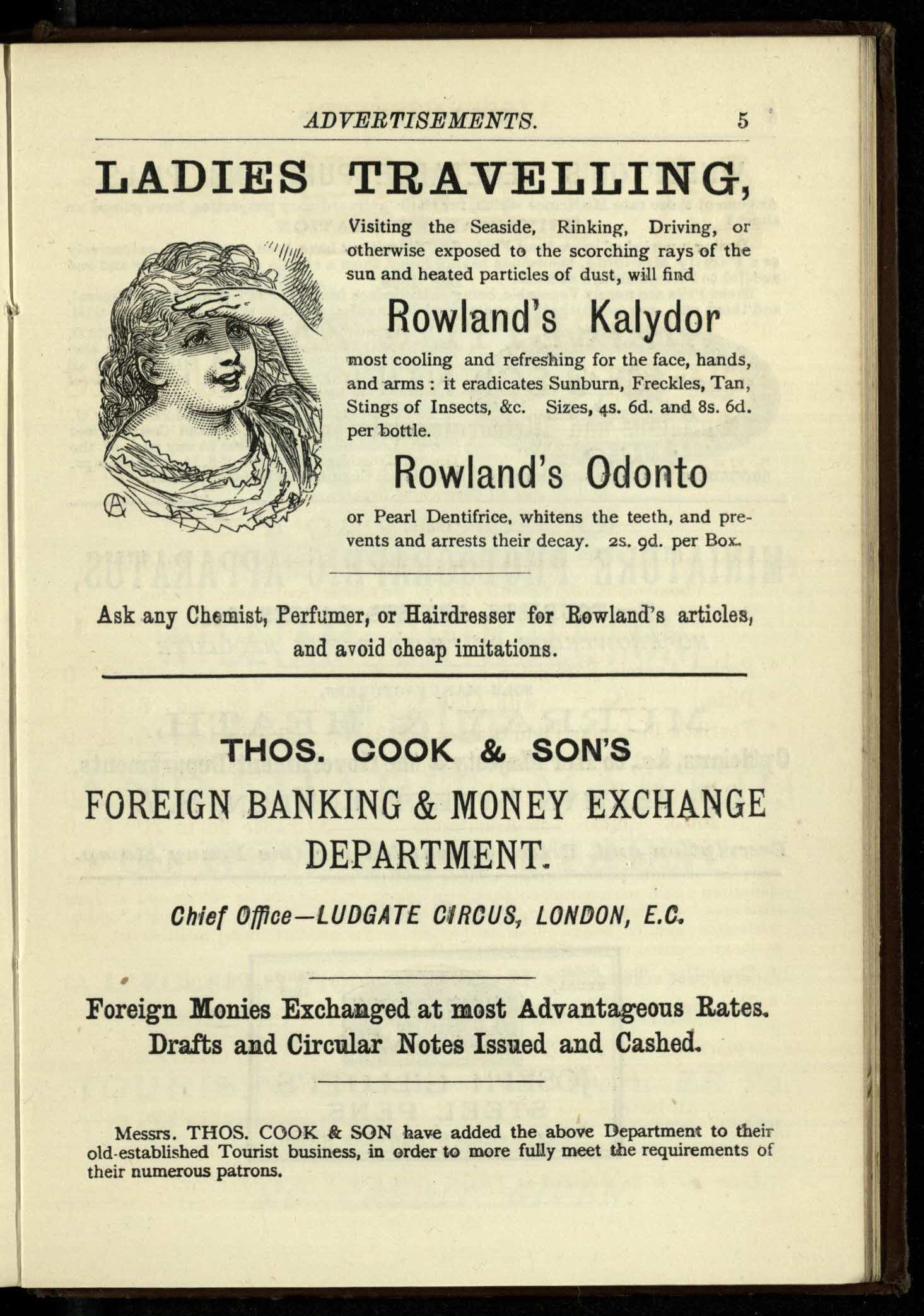
Burlesque and local humour
In true Belle Époque style, many travel guides featured absurd and burlesque adverts using humour in order to promote products that were in line with their contemporary society. The rise of capitalism saw the development of banking, speculation, credit and insurances. The advert for a Paris-based insurance company shows a woman who just lost her husband but only hopes he did not forget about her insurance policy.
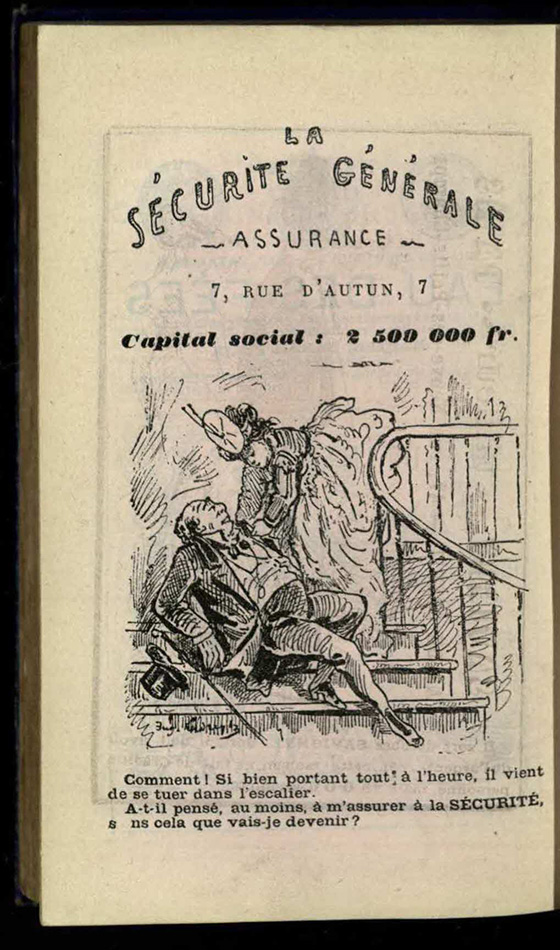
“What?! He looked so healthy earlier today, and he just died in the staircase… Did he at least remember to insure me at La Sécurité? What would I become otherwise?” Cro DQ16.C66E73
As morals became more and more liberal during that period, controversial practices were at the centre of the humorous references featured in advertising campaigns. The announcement for the guidebook itself shows a man telling his wife that the book’s travel recommendations have made him faithful and wise – which his wife believes was rather unexpected…
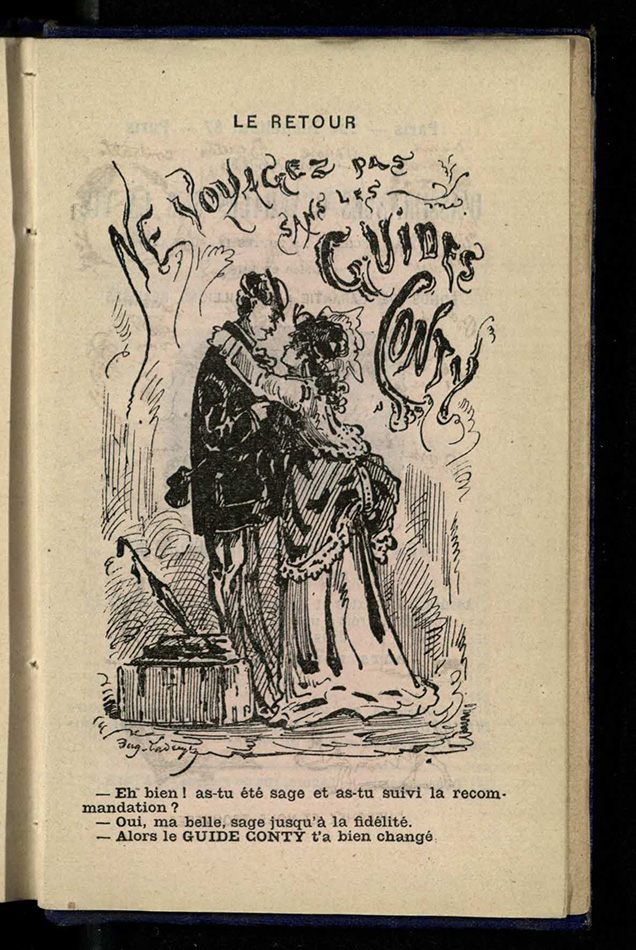
“Do not travel without the Conty Guidebooks
Well! Have you behaved and have you followed their recommendations?
Yes dear, I have behaved and remained faithful
Well the Conty Guidebook has definitely transformed you…” Cro DQ16.C66E73
Regional humour and local references were also key to attract particular readers’ attention. The advert for Ruolz’s goldsmithery suggests that Paris’s Grand Boulevards are overrated and the Maison Lejeune, in a quieter part of Paris, offers equally good products.
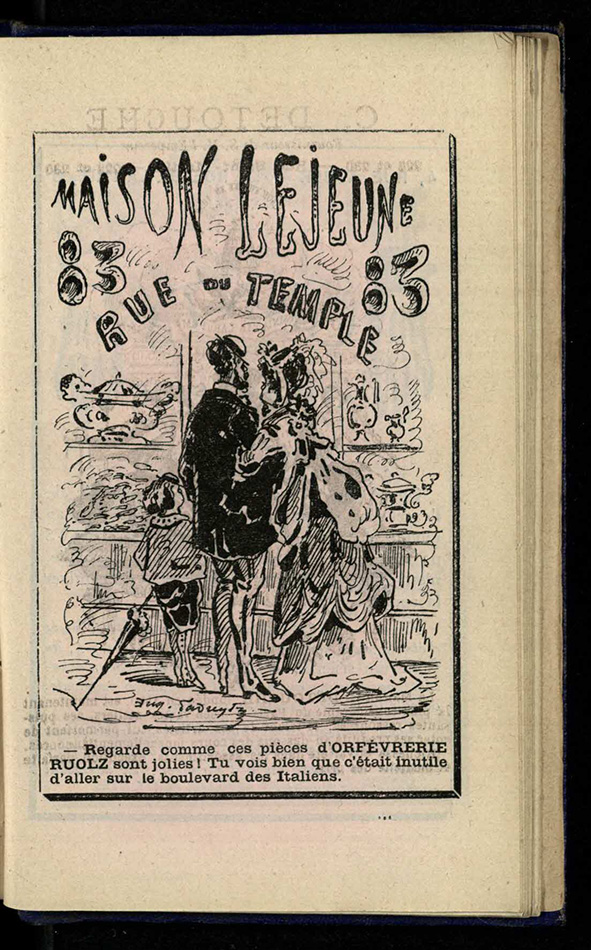
“Look at these beautiful objects from Ruolz! You see, there is no need to travel across town to get some!” Cro DQ16.C66E73
Sometimes adverts were so original that one of them even stated: “At least I understand this advert, because their chocolate is really good!” implying that all other adverts were far too complicated and looking for very niche humour…
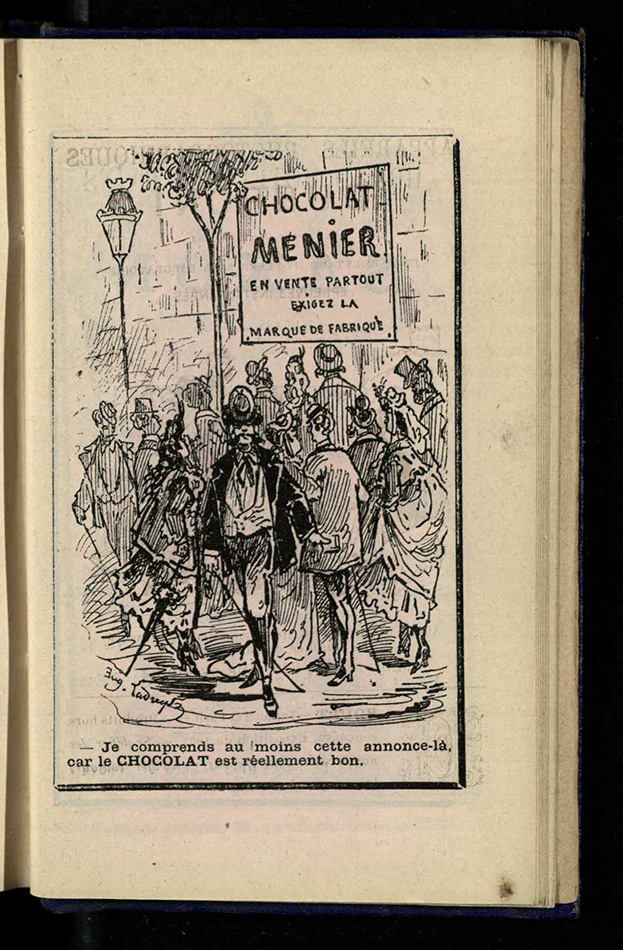
“At least I understand this advert, because their chocolate is really good!” Cro DQ16.C66E73
Luxury and sophistication
With or without a humorous touch, most adverts clearly targeted wealthy and cosmopolitan travellers. Remaining elegant whilst travelling was a classic concern that advertisers wished to address: therefore, products for general hygiene and preventing travel-related illnesses were very frequent. Discovering a new country was not always an easy endeavour: many adverts therefore focused on the possibility of travellers finding their familiar products abroad. Murray’s Handbook’s page on Geneva shows a chemist and a hotel where British travellers will find the English products and newspapers they so dearly missed.
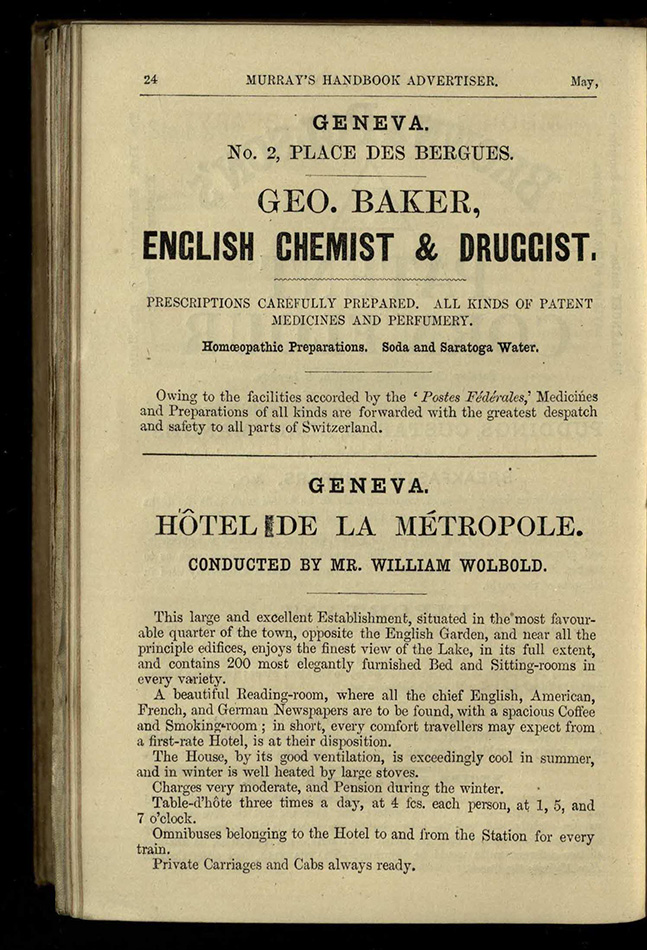
However, many adverts actually focused on the city where the guidebook was published, with no direct link to travelling. Carter’s in London, although including some carriages and travel objects, also sold and advertised beds and house furniture.
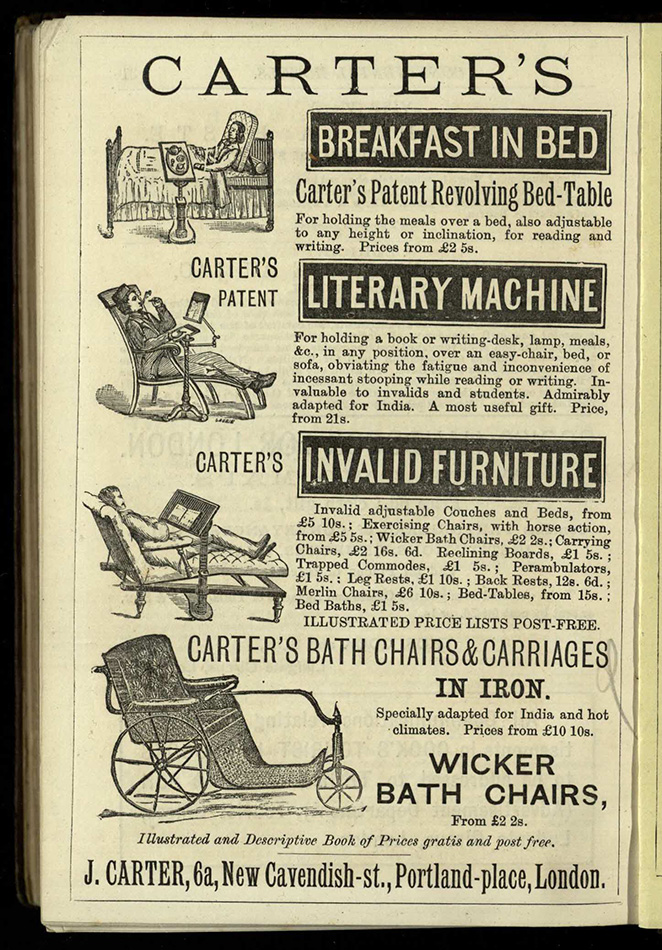
The Chemiserie Spéciale in Paris promoted their high quality shirts through travel guidebooks, without mentioning their relation to the practice of travelling. The place of publication was therefore very important in order to target the right audience.
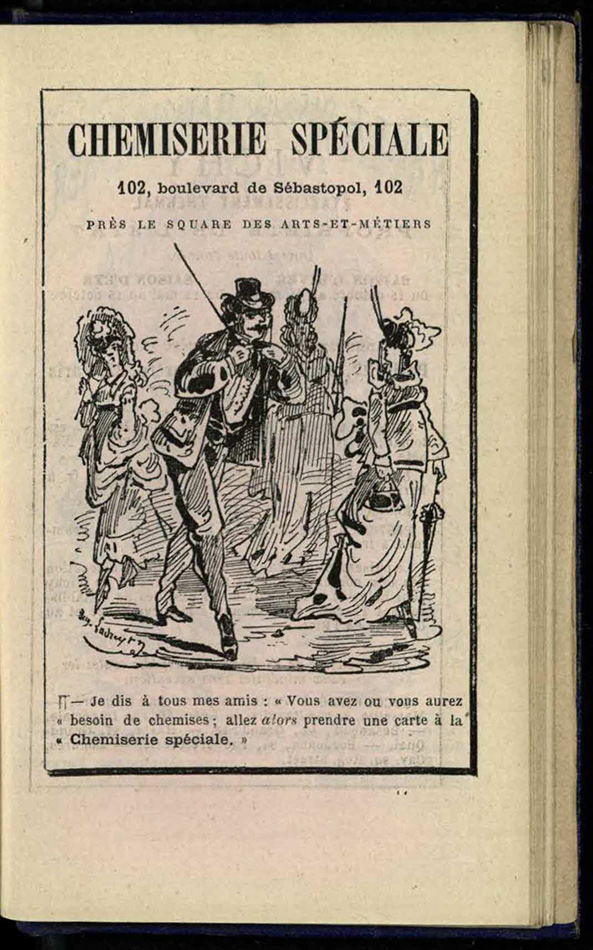
“I tell all my friends: You do or you will need shirts at some point; go and get a card from La Chemiserie Spéciale then!” Cro DQ16.C66E73
The late nineteenth century spread the idea that travelling was both necessary and fashionable, and that it could be undertaken in the most luxurious conditions. These adverts allowed these travel guidebooks to become reference points for travellers, knowing what was recommended and what was not. Decades before the rise of marketing, advertisements were already an object of attention and fascination – and it certainly fascinated us whilst coming across these!
Jordan Girardin
Lighting the Past Cataloguer
Jordan Girardin is a final year PhD student in the School of History and a cataloguer within the Lighting the Past team. His thesis focuses on the emergence of travel and tourism in the Alps between the 1750s and 1830s.
Really interesting read! Travelling back in those days would have been such a different process, but the beauty of the world stays the same!
St Andrews Uni Library borrowers' records in the early 19th century show that tourist guides were borrowed regularly by professors - whether for themselves or for their friends!
[…] Adverts in 19th century travel books […]
[…] This is the second post in a weekly miniseries about advertisements in 19th century books. You can read the first post in the series here. […]
[…] miniseries about advertisements in 19th century books. You can read the first post in the series here, and the second […]
[…] was cataloguing travel accounts about the Alps, which I then used in my PhD thesis. I also wrote a blog about advertisements found in these […]